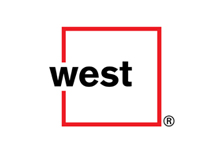National Disaster Recovery Nonprofit, SBP, and NY Governor's Office of Storm Recovery, Partner to Elevate Homes in Brooklyn and on Staten Island
Groundbreaking of pilot program designed to drive down the market-rate cost of home elevation will be held on October 18, 2017
Brooklyn, NY - On October 18, 2017, SBP and the New York Governor's Office of Storm Recovery (GOSR) will break ground on a first-of-its-kind home elevation pilot program called Project UPLIFT. The Program represents an innovative partnership between a nonprofit and state government, designed to increase resilience in vulnerable Sandy-impacted communities while also driving down current market rate costs of home elevations.
A home belonging to 69-year-old military veteran, Joseph Lynch, at 25 Melba Court in Gerritsen Beach, Brooklyn is the first to be lifted through the program.
WHO: Governor's Office of Storm Recovery (Lisa Bova-Hiatt, GOSR Executive Director), SBP (Thomas Corley, Director of New York Operations and Project UPLIFT), Joseph Lynch (first homeowner to be served in Project UPLIFT)
WHEN: 10AM on Wednesday, October 18, 2017
WHERE: 25 Melba Court, Brooklyn, NY 11216 Gerritsen Beach (Site of First Home Elevation)
To learn about and support SBP's efforts in New York, click here.
To learn about Project Uplift, click here.
About SBP
SBP's mission is to shrink time between disaster and recovery. Since its founding in 2006 in St. Bernard Parish, Louisiana following the devastation wrought by Hurricane Katrina, SBP has rebuilt homes for more than 1,300 families with the help of 180,000 volunteers in New Orleans; Joplin, MO; Staten Island, NY; Rockaway, NY; Monmouth and Ocean Counties, NJ; San Marcos, TX; Columbia, SC; White Sulphur Springs, WV, Baton Rouge, LA and Houston, TX.
SBP's model is enhanced by AmeriCorps, which provides 320 members annually to manage worksites and clients, and train the organization's volunteers nationally.
SBP shrinks time between disaster and recovery via five interventions:
1. Rebuild homes quickly and efficiently after disasters.
2. Share rebuilding model and innovations with other rebuilding
organizations.
3. Prepare home and business owners prior to and following disaster with
specific steps to mitigate risk and improve resilience.
4. Advise policy makers immediately after a disaster so they can deploy
federal dollars sooner, and in a way that empowers an efficient recovery.
5. Advocate for the reform of disaster recovery strategies.
To learn more, visit www.SBPUSA.org and like/follow on Facebook & Twitter @SBPUSA
SBP CONTACT: Evan Achiron | eachiron@sbpusa.org
/PRNewswire -- Oct. 16, 2017/
SOURCE SBP





